You would like to have your deep bite treated? Here you will find all the information you need about malocclusion and deep bite treatment.
Dentists and orthodontists speak of a so-called malocclusion whenever one or more teeth are outside the ideal arch shape of the upper or lower jaw.
For example, they may be rotated, the teeth may be forward or backward, or they may simply not grow out where they should.
Most tooth misalignments have only aesthetic effects. This means that although they disturb us visually, they do not negatively affect our health.
| Get 150 € discount on your dental correction! |

Book a consultation appointment now at a nearby DrSmile partner practice and find out if teeth straightening with aligners is right for you.
The appointment is completely non-binding and does not involve any costs.
With the code “THATSMILE150” you will receive 150 € discount on the treatment.
In some circumstances, however, crooked teeth can also make it difficult to clean the teeth or interfere with food intake. Speech disorders (e.g. lisp) are also not uncommon.
Serious health consequences are also possible. However, they are usually the result of extreme tooth misalignment.
One of the most common malocclusions is the so-called deep bite. This is a malocclusion that is manifested by a displacement of the upper row of teeth in front of or above the lower row of teeth.
This often bothers those affected for aesthetic reasons. In some cases, however, the misalignment of teeth must also be treated for health reasons.
You can find more information on the topic of deep bite and treatment options in this article.
Here you can also find out whether discreet correction with invisible braces (aligners) is possible.
You want to know directly? Then make a free and non-binding consultation appointment here.
You can find a first overview of all malocclusions here.
Many patients have already had their misaligned teeth successfully treated with invisible dental splints. Take a look at their before/after pictures here.

Deep bite profile: What exactly is a deep bite?
Dentists and orthodontists always speak of a so-called normal bite when the upper front teeth slightly overhang the lower ones.
The normal range is about 2-3 millimeters. If this is the case, biting is possible without any problems and the upper and lower incisors support each other.
A deep bite, on the other hand, is when the teeth of the upper jaw protrude more than 3 millimeters above the teeth of the lower jaw. It is one of the most common malocclusions in the orthodontic field.
There is then a risk of the lower teeth biting into the palate or the upper incisors hitting the lower gums.
The deep bite often occurs in childhood and should be treated early.
If treatment is neglected, the malocclusion usually becomes more pronounced over the years because the lower and upper teeth do not support each other.
In addition to the deep bite, some patients also have an overbite. This means that the upper jaw is too far forward.
In this case, the treatment is necessary not only from a medical point of view, but also from an aesthetic one.
This is what a deep bite can look like, for example:
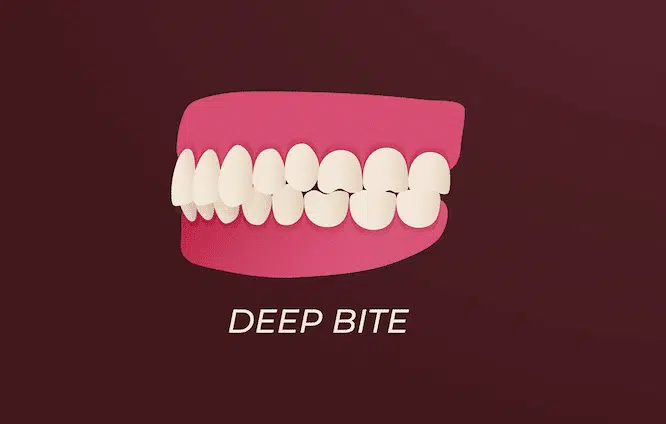
How does the deep bite differ from the overbite?
The overbite is a particularly pronounced form of malocclusion. In this type of deep bite, the incisors in the upper jaw completely hide those in the lower jaw.
Furthermore, the teeth are additionally folded inwards. The incisors are completely covered in this way – hence the name “overbite”.
Deep bite causes: How does the malocclusion develop?
In most cases, a deep bite is genetic. Since the upper and lower incisors do not support each other enough, the upper teeth usually grow out.
In technical jargon, the upper teeth extrude. In this way, they project further and further beyond the lower incisors until they meet the gums.
In some cases, the misalignment of the teeth can also be caused by the fact that the molars have not erupted far enough.
They then make contact very late when biting down, which causes the anterior teeth to protrude extremely far.
The combination of a deep bite with an overbite is also not uncommon. The upper jaw projects too far in front of the lower jaw here.
As a result, the upper incisors no longer have any opposing teeth. They then also become longer and grow out.
In the course of dental treatment, both malocclusions must always be treated so that the therapy can be completed successfully.
| Get 150 € discount on your dental correction! |

Book a consultation appointment now at a nearby DrSmile partner practice and find out if teeth straightening with aligners is right for you.
The appointment is completely non-binding and does not involve any costs.
With the code “THATSMILE150” you will receive 150 € discount on the treatment.
Deep bite symptoms and deep bite consequences: What are the effects?
A deep bite can influence the cooperation of tendons, muscles and joints. It can have a negative impact on health and lead to visual impairment.
Possible cosmetic and health consequences may include:
- Gingivitis and receding gums
- Pain in the jaw muscles
- Injury to the lower, external gum
- Injury of the anterior palate and palatal mucosa
- Rare: Chewing and breathing problems
- In severe cases: Caries and periodontal disease, due to the strong contact between teeth when biting together.
Last but not least, a pronounced deep bite can lead to an impairment of the facial profile . Typical for the malocclusion are “buck teeth” and a so-called receding chin (centrifugal chin).
These visual impairments caused by the crossbite can in turn result in psychological problems.
Deep bite treatment: How to proceed?
A deep bite almost always needs to be treated, otherwise it will continuously worsen.
There are several options for deep bite treatment recommended by dentists and orthodontists depending on the severity of the malocclusion and the age of the patient.
Deep bite treatment children and adolescents
In children and adolescents, the jaw is still growing. Accordingly, dentists and orthodontists have more options to correct the misalignment of teeth.
One option for deep bite treatment in children is active plates. These are removable braces that actively interfere with jaw growth and tooth alignment.
Active plates consist of a plastic framework into which wire elements are incorporated for support.
A special form for the treatment of the deep bite is the frontal bite block. This ensures that the teeth are no longer completely clenched. In this way, they approach the normal bite.
Functional orthodontic appliances (FKO appliances) have a passive effect. They use the natural muscle movements to correct the teeth.
A combination of fixed and removable parts is offered by the so-called headgear. It belongs to the extraoral devices (cervical headgear) and consists, on the one hand, of metal bands that are attached to the posterior upper molars and remain in the mouth.
Second, there is an external brace that attaches to these bands and can be removed by the patient.
Last but not least, older children and adolescents may also use traditional fixed braces, which consist of brackets, bands and archwires.

Deep bite treatment adults
In adults, deep bite treatment is somewhat more difficult than in children and adolescents because the jaw is no longer growing.
Nevertheless, a deep bite can and should be corrected at any age. How long the therapy lasts depends on the severity of the malposition.
If orthodontic measures in childhood were unsuccessful or even missed, fixed braces may be used in adults .
Fixed braces must be worn for several months, in some cases even for several years.
However, quite a few adults fear the limitations of fixed braces in their professional and everyday lives.
Also for aesthetic reasons, fixed braces are an absolute emergency solution for most adults.
In addition, there is the relatively high price. This is because health insurance only covers the costs of deep bite treatment in extreme cases.
As a rule, however, a deep bite treatment for adults has to be paid for by the patient, which is often no walk in the park with treatment costs starting from 6000 euros upwards.
Deep bite braces: Discreet treatment with aligners is often possible
In some cases, however, adults can avoid fixed braces. This is because treatment with transparent dental splints is often possible for mild to moderate degrees of tooth misalignment.
These so-called aligners enable discreet tooth correction, as they are completely transparent and fit precisely on the teeth.
They can be removed at any time. However, this is only recommended for eating and daily dental care, as they must be worn for at least 22 hours a day.
Another plus point is the price: the cost of invisible dental trays, for example, starts at just 1790 euros or 33 euros a month with the renowned provider DrSmile.
Here you can find more information about DrSmile prices.
You can find out whether your deep bite can be treated with invisible aligners during a free, no-obligation consultation that you can book here.
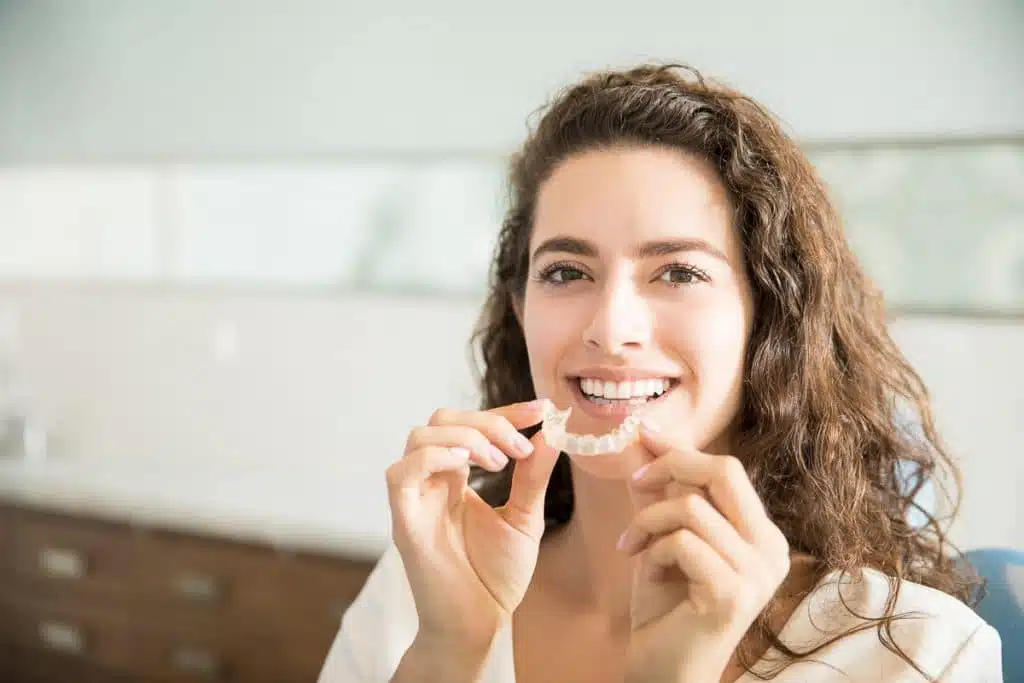
Deep bite: Invisalign helps in extreme cases
If regular aligners reach their limits, the invisible braces of Invisalign can treat a more pronounced open bite in some cases.
However, they are significantly more expensive than the products of competitors.
| Get 150 € discount on your dental correction! |

Book a consultation appointment now at a nearby DrSmile partner practice and find out if teeth straightening with aligners is right for you.
The appointment is completely non-binding and does not involve any costs.
With the code “THATSMILE150” you will receive 150 € discount on the treatment.
FAQs about deep bite treatment and deep bite before/after
At this point we will answer some frequently asked questions about deep bite treatment and deep bite before/after.
Is a deep bite bad?
The deep bite is one of the most common dental malocclusions and can lead to health and cosmetic problems under certain circumstances. a deep bite almost always requires treatment, otherwise it will continuously worsen.
What does a deep bite look like?
In a deep bite, the upper teeth overlap the lower teeth by more than 4 millimeters, so that almost no lower teeth are visible when the mouth is closed.
When is one too old for braces?
As long as the gums and jawbone structure are in good condition, braces can be worn at any age.
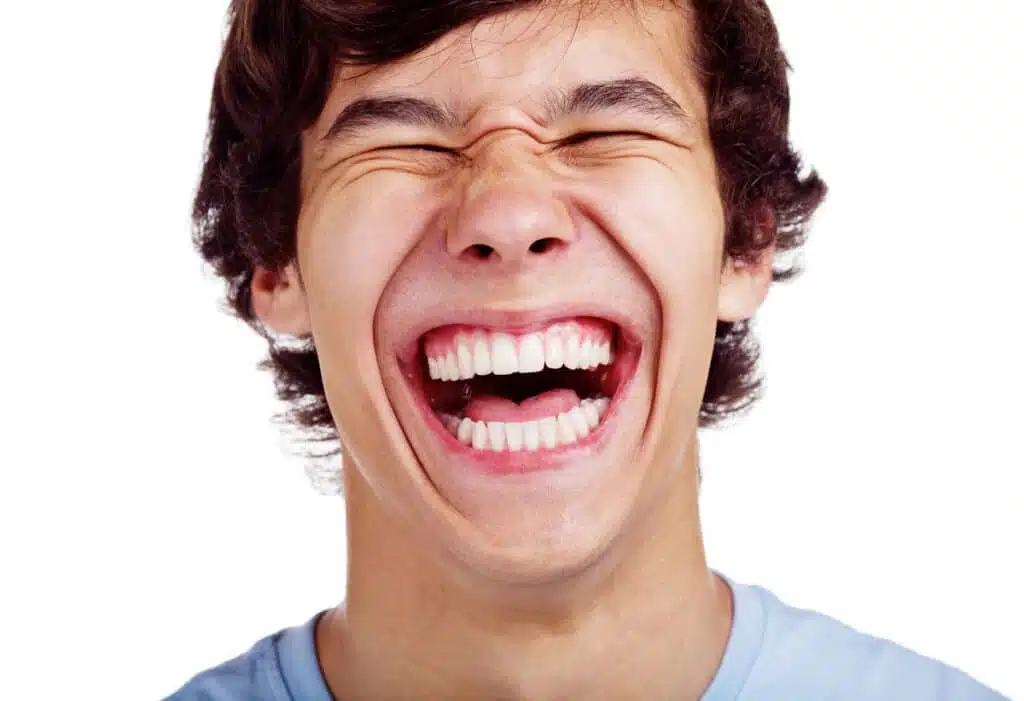
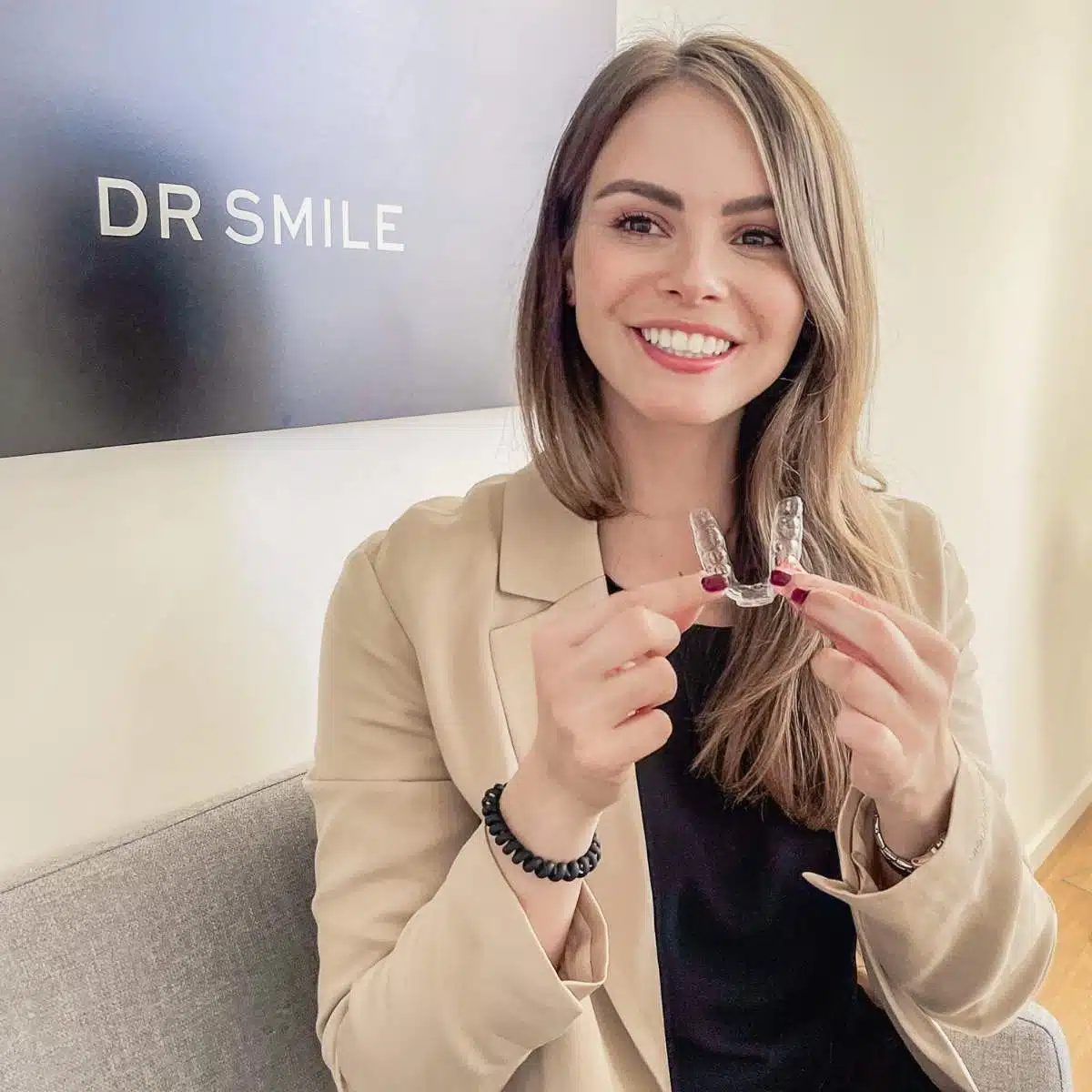
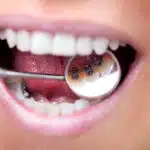

Leave a Reply